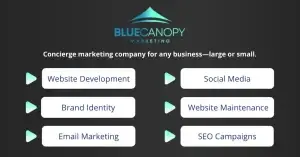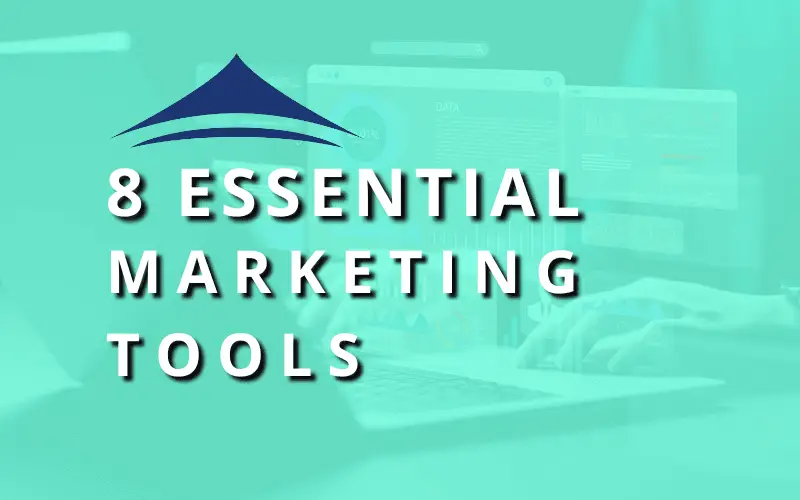Marketing can feel like a complex puzzle, but having the right tools in your marketing toolbox can make all the difference. Whether you’re a startup, a small business, or a growing enterprise, leveraging these tools can help you achieve your marketing goals more effectively. From automation to analytics, here’s a look at essential tools that every business should consider, and how they can drive success in your marketing strategy.

1. Social Media Management Tools
Examples: Buffer, Hootsuite, Later, Birdeye
Why You Need Them: Social media platforms are among the most powerful channels for brand building and customer engagement. But managing multiple accounts, scheduling posts, and analyzing engagement can be time-consuming.
How They Help Achieve Marketing Goals:
- Consistency: Tools like Birdeye and Hootsuite allow you to schedule posts in advance, ensuring that you maintain a consistent posting schedule even during busy periods.
- Engagement: Monitor comments, likes, and mentions in one place, making it easier to engage with followers quickly.
- Analytics: Gain insights into which posts are driving the most engagement and adjust your strategy accordingly to increase reach and engagement.
2. Email Marketing Platforms
Examples: Constant Contact, Mailchimp, ConvertKit, ActiveCampaign
Why You Need Them: Email marketing remains one of the most cost-effective ways to reach your audience directly. With the right platform, you can automate campaigns, segment your audience, and analyze performance.
How They Help Achieve Marketing Goals:
- Personalization: Email platforms like Constant Contact allow you to segment your audience based on interests, purchase history, or engagement, enabling you to send personalized messages that resonate with each customer group.
- Automation: Automate welcome sequences, abandoned cart reminders, and drip campaigns, freeing up time while nurturing leads into customers.
- Analytics: Measure open rates, click-through rates, and conversion rates to understand what content resonates with your audience and refine your campaigns for better results.
3. Customer Relationship Management (CRM) Systems
Examples: HubSpot, Salesforce, Zoho CRM
Why You Need Them: Managing customer relationships is crucial for building long-term loyalty and understanding customer needs. CRMs help organize customer data, track interactions, and manage sales pipelines.
How They Help Achieve Marketing Goals:
- Lead Management: CRMs help you track where leads are in the sales funnel, making it easier to tailor your marketing messages to their stage in the customer journey.
- Data-Driven Decisions: By analyzing customer interactions and purchase behaviors, you can create targeted marketing campaigns that address specific needs and preferences.
- Sales Alignment: CRMs align your marketing and sales efforts by ensuring both teams have access to the same customer data, improving communication and collaboration.
4. SEO and Content Marketing Tools
Examples: SEMrush, Ahrefs, Yoast SEO, Rank Math
Why You Need Them: For many businesses, organic search is a critical source of traffic and leads. SEO tools help you optimize your website and content for search engines, making it easier for potential customers to find you.
How They Help Achieve Marketing Goals:
- Keyword Research: Tools like SEMrush and Ahrefs help you identify high-value keywords that your target audience is searching for, allowing you to create content that matches their needs.
- Competitor Analysis: Understand what your competitors are ranking for and find opportunities to outperform them with better content and optimized strategies.
- On-Page Optimization: Plugins like Rank Math guide you through optimizing blog posts, landing pages, and product descriptions, making sure they follow best practices for search engines.
5. Graphic Design Tools
Examples: Canva, Adobe Spark, Figma
Why You Need Them: Visual content is key to capturing attention on social media, websites, and email marketing. You don’t need to be a professional designer to create beautiful visuals—these tools make it accessible for everyone.
How They Help Achieve Marketing Goals:
- Brand Consistency: Create templates for social media posts, email headers, and blog graphics to maintain a consistent brand aesthetic across all channels.
- Quick Content Creation: Tools like Canva come with pre-designed templates, making it easy to create professional-looking graphics without needing advanced design skills.
- Engagement: Visual content tends to drive higher engagement on social media, making it a powerful way to connect with your audience and encourage shares and interactions.
6. Analytics and Reporting Tools
Examples: Google Analytics, Hotjar, Databox
Why You Need Them: Understanding what works and what doesn’t is crucial for refining your marketing strategy. Analytics tools give you a clear picture of website traffic, user behavior, and campaign performance.
How They Help Achieve Marketing Goals:
- Website Insights: Google Analytics helps you understand where your traffic comes from, which pages are most popular, and how users navigate your site, allowing you to improve user experience.
- Heatmaps: Tools like Hotjar provide heatmaps that show where users are clicking and scrolling on your website, helping you optimize layout and content for better conversions.
- Dashboards: Databox allows you to integrate multiple analytics platforms into one dashboard, making it easier to monitor KPIs and track progress toward your marketing goals.
7. Project Management and Collaboration Tools
Examples: Trello, Asana, Slack, Monday
Why You Need Them: Marketing often involves collaboration between team members, freelancers, or even clients. Project management tools help keep everyone on the same page and ensure tasks are completed on time.
How They Help Achieve Marketing Goals:
- Task Management: Break down marketing campaigns into actionable tasks and assign them to team members, ensuring that every part of the strategy is executed smoothly.
- Collaboration: Tools like Slack integrate with other platforms, making it easy to communicate, share files, and provide feedback in real time.
- Tracking Progress: Monitor deadlines and project milestones with tools like Trello and Asana, making sure campaigns stay on track and are completed on time.
8. Ad Management Platforms
Examples: Facebook Ads Manager, Google Ads, LinkedIn Campaign Manager
Why You Need Them: Paid advertising can significantly boost your reach, especially when targeting specific audiences. Ad management platforms give you control over your ad campaigns and provide data to optimize performance.
How They Help Achieve Marketing Goals:
- Targeted Reach: Use advanced targeting features to reach specific demographics, interests, or behaviors, ensuring your ads reach those most likely to convert.
- Retargeting: Keep your brand top-of-mind with retargeting campaigns that reach people who have visited your website but haven’t yet converted.
- Performance Tracking: Ad platforms provide detailed insights into ad performance, allowing you to tweak your campaigns for better results and a higher return on ad spend.
Build Your Marketing Toolbox and Achieve Your Goals
No matter the size of your business, having the right tools in your marketing toolbox is essential for success. These tools can help streamline processes, improve customer engagement, and ultimately drive more leads and sales. As you build your marketing strategy, focus on tools that align with your specific goals, whether it’s growing your social media presence, optimizing your website for search engines, or managing customer relationships more effectively.
By investing in the right tools and making data-driven decisions, you’ll be well-equipped to take your marketing efforts to the next level. When you are a client of Blue Canopy Marketing, our team can assist with some of these tools and integrate them into your workflow. Happy Marketing!
Thanks for reading!
Click here to sign up for the newsletter to stay connected with us!
Follow us on Facebook | Instagram | LinkedIn




